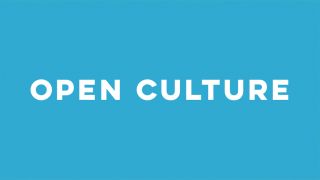Open Culture is a free hub that lists all the available online digital learning resources that the web has to offer for educational purposes.
Launched in 2006, it is the brainchild of Stanford dean Dan Coleman. The original idea was to create a single point on the internet that lists the many educational resources available online for free.
Since then this has obviously grown massively, yet thanks to a team of editors the site is kept updated with lots of useful educational resources. From free audio recordings to K-12 specific material, there is plenty from which to pick.
So how can you use this for education right now?
What is Open Culture?
Open Culture is essentially a list, in one place, of all the useful educational resources available across the internet, for free. As the name suggests, that spans a wide range of culture and potential subjects for which it can be used.

This site has been around for nearly two decades and the look hasn't much changed. As such, it is quite dated in the look and layout, with so many resources listed in a way that could appear overwhelming to go through.
Fortunately, the site is accompanied by an optional email newsletter that collates new material for some of the best current picks worth checking out. All of this is offered for free. So if you have an ad blocker running you may be met with a pop-up that asks you politely to consider turning it off so the site can make money to pay its staff and running costs.
How does Open Culture work?
Open Culture is free to use so you don't need to pay anything nor do you need to sign up or give personal details of any kind to start using it right away.

On arriving to the site you will find a list of potentially useful educational resources. Sub-headings are across the top for narrowing down your search criteria with options such as K-12 specific content, audio recordings, ebooks, movies, podcasts, courses, languages, and more, all available.
Navigate to one of these and you'll find a selection of links, each of which will take you offsite to that resource. So there isn't anything actually on the website itself, just links to other places that offer the content. Here it pays to open in a new tab or window if you plan to browse a few links, to avoid losing the original list website.
Each link has a short description to give you a flavor of what you're selecting before letting you go off to explore that in more depth.
What are the best Open Culture features?
Open Culture is very much a free option and this makes you realize just how many wonderful educational resources are available online, if only you could find them. Which this helps you do with relative ease.
Sure, you could go onto Google and search to find them, but if you haven't discovered something yet, how do you search for it? This brings you gems that you may not have even considered as existing and useful to your class.

The lockdown period has helped this site to grow even more as its popularity and usefulness became greater to those stuck at home. As such, you now have a vast array of resources for K-12 education and more.
From Zoom's free video conferencing tools and free online drawing lessons to museum tours and the National Emergency Library, there is a wealth on offer. Then there are those audio and ebooks sections that offer audible stories, history books, physics comic books, free courses, classical music performances, and more.
Everything is very simply laid out and easy to understand, making it a useful place for educators to find helpful content but also for students to browse and enjoy the treasure trove of content too. As mentioned, that newsletter email is a great way to discover more without the need to trawl through everything available.
How much does Open Culture cost?
Open Culture is totally free. No money is required and no personal details need to be given as you don't need -- and in fact, can't -- create an account.
The site does have some advertising to help fund it. You can leave your ad blocker on but will be prompted to remove it each time you load a new page. You can also make donations to the website to help keep it running for free.
Open Culture best tips and tricks
Sign up
Have the class sign up to the email so you can receive the updates together, then discuss new weekly findings in class, letting everyone bring something of what they learned.
Go explore
Use the interactive map showing the most frequently assigned books in universities around the world, as you explore potential next education choices with class.
Present
Have students find a new resource each week and present back to the class some of the best bits for everyone else to explore later on in that lesson.

